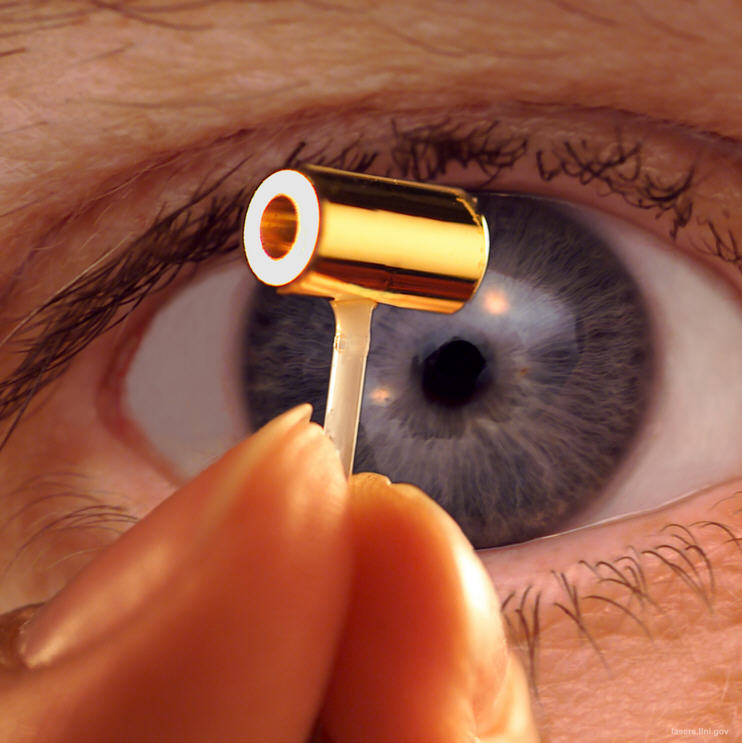博文
在核聚变试验中,用磁性线圈覆盖圆筒可使其能量输出增加三倍
 精选
精选
||
在核聚变试验中,用磁性线圈覆盖圆筒可使其能量输出增加三倍
诸平

Fig. 1 (a) Sketch of the magnetized NIF hohlraum constructed from AuTa4 with solenoidal coil to carry current. (b) X-ray drive measured through one of the LEHs and the incident laser powers for a magnetized and unmagnetized AuTa4 hohlraum and two unmagnetized Au hohlraums. “BF” refers to “BigFoot,” the name of the previous ignition design. Credit: Physical Review Letters, 2022, 129: 195002. DOI: 10.1103/PhysRevLett.129.195002. Published 4 November 2022
据美国物理学家组织网(Phys.org)2022年11月25日报道,在核聚变试验中,在圆柱体上覆盖一个磁性线圈,其能量输出可增加三倍(Covering a cylinder with a magnetic coil triples its energy output in nuclear fusion test)。
在美国劳伦斯·利弗莫尔国家实验室(Lawrence Livermore National Laboratory)下属的美国国家点火设施(National Ignition Facility)工作的一组研究人员发现,用一个磁线圈覆盖一个装有少量氢燃料的圆柱体,并对其发射激光,可以使其输出的能量增加三倍——这是将核聚变发展为能源的又一步。
该研究小组的成员来自美国的几家机构,英国和日本各一家机构,他们的研究报告于2022年11月4日已经在《物理评论快报》(Phytly Review Letters)杂志网站发表——J. Moody, Bradley Pollock, H. Sio, D. J. Strozzi, D D-M Ho, Christopher Alexander Walsh, Gregory Elijah Kemp, B. Lahmann, Sergei O. Kucheyev, B. Kozioziemski, E. G. Carroll, J. Kroll, D. K. Yanagisawa, J. Angus, Benjamin Bachmann, S. D. Bhandarkar, J. D. Bude, L. Divol, B. Ferguson, J. Fry, L. Hagler, E. Hartouni, M. C. Herrmann, Warren Hsing, Dean Holunga, Nobuhiko Izumi, J. Javedani, A. Johnson, S. Khan, D. Kalantar, T. Kohut, B. G. Logan, Nathan Daniel Masters, Abbas Nikroo, N. Orsi, Kursley Piston, C. Provencher, A. Rowe, J. Sater, K. Skulina, W. A. Stygar, V. Tang, S. E. Winters, G. Zimmerman, P. Adrian, J. P. Chittenden, B. Appelbe, A. Boxall, A. Crilly, S. O’Neill, J. Davies, J. Peebles, Sarah Fujioka. Increased Ion Temperature and Neutron Yield Observed in Magnetized Indirectly Driven D2 -Filled Capsule Implosions on the National Ignition Facility. Physical Review Letters, Published 4 November 2022, 129: 195002. DOI: 10.1103/PhysRevLett.129.195002. https://journals.aps.org/prl/abstract/10.1103/PhysRevLett.129.195002
在此文中研究者描述了他们的设备升级,以便引进磁线圈。
2021年,在同一设施工作的一个团队宣布,他们比迄今为止的任何人都更接近于实现核聚变试验的点火。不幸的是,他们无法复制他们的结果。从那时起,该团队就一直在审查他们的原始设计,寻找改进的方法。
最初的设计是向一个微小的圆柱体发射192束激光束(laser beams),圆柱体的中心有一个微小的氢气球。这就产生了X射线,使球体加热,直到原子开始聚变。一些设计改进包括改变激光通过的孔的尺寸,但这些改进只带来了微小的变化。
为了寻找更好的解决方案,该团队研究了之前的研究,发现有几项研究通过模拟显示,将圆柱体包裹在磁场中可以显著提高能量输出(energy output)。
为了将这个建议付诸实践,研究人员不得不对圆柱体进行改造——最初它是用金子做的。将其置于强磁场中,会产生足够强的电流将圆柱体撕裂,因此他们用金和钽的合金制造了一个新的圆柱体。他们还将气体从氢气转换为氢的同位素氘,然后用线圈将整个装置覆盖,再施加特斯拉磁场(tesla magnetic field)。然后他们打开了激光。研究人员看到了一个立竿见影的进步——球体上的热点增加了40%,输出的能量增加了三倍。
这项工作标志着向最终目标——建造一个能产生比投入更多能量的聚变反应堆(fusion reactor )——迈进了一步。
上述介绍,仅供参考。欲了解更多信息,敬请注意浏览原文或者相关报道。
Rachel Berkowitz Magnetic Field Heats Up Fusion. Physics, Published 4 November 2022, 15: 169. https://link.aps.org/doi/10.1103/Physics.15.169
Researchers find new ways to steer fusion with lasers and magnetic fields
The application of an external 26 Tesla axial magnetic field to a D2 gas-filled capsule indirectly driven on the National Ignition Facility is observed to increase the ion temperature by 40% and the neutron yield by a factor of 3.2 in a hot spot with areal density and temperature approaching what is required for fusion ignition [1]. The improvements are determined from energy spectral measurements of the 2.45 MeV neutrons from the D(d, n)3He reaction, and the compressed central core B field is estimated to be ~4.9 kT using the 14.1 MeV secondary neutrons from the D(T, n)4He reactions. The experiments use a 30 kV pulsed-power system to deliver a ~3 μs current pulse to a solenoidal coil wrapped around a novel high-electrical-resistivity AuTa4 hohlraum. Radiation magnetohydrodynamic simulations are consistent with the experiment.
https://blog.sciencenet.cn/blog-212210-1365652.html
上一篇:火星陨石坑岩石中可能发现的有机化合物
下一篇:转基因烟草植物的叶子会产生可卡因
